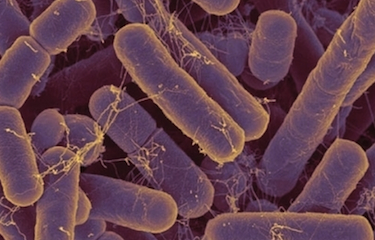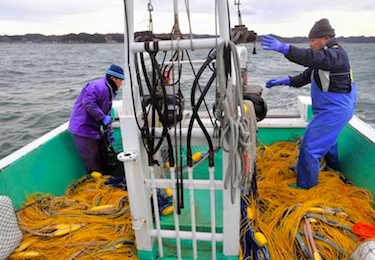
Planet Waves' Monsanto Watch is Back Dear Friend and Reader: It's been a while since we sent out Monsanto Watch, known among our editors as Monsanto Eco. We are back in force with a juicy edition. The concept of this free newsletter is to focus one or two items a week on Monsanto and GMO issues, and then to cover a few other environmental news topics. This is indeed a free newsletter. If you want to send your friends to get subscriptions, they may sign up at this link. You can post this to Facebook, your blog or wherever.
That is, the local and national news, TV, magazines, radio, Internet, websites, email threads, Facebook -- wherever you go. When you see anything interesting that includes anything about Monsanto, the chemical business, agriculture or any related topic, please send it to us at eco@planetwaves.net. Please send it even if you think we've seen it! The best format is to send the link and a paragraph from the news item, so we can see at a glance what is happening. This will help us get the news out to everyone else. Part 1-A, if you're a fan of Buckminster Fuller and can also write, I would love to hear from you. Second, I'm looking for a natural-born news writer to help write the newsletter. The kind of person who is a quick study and can explain things to ordinary people in plain talk. This is a volunteer gig that would take a few hours a week. I need someone who can write in the news idiom, familiar with the concept of 'style', who can spot the lead and write a solid paragraph. What you will get in exchange is reaching a very interested audience plus the experience of working for editors who have many decades' experience covering Monsanto and many of its cohorts. If this describes you, please write to me at eric@francis.pw. Thank you for caring about these issues. Lovingly,  PS, in case you missed my article on the astrology and history of Monsanto in The Mountain Astrologer, the link takes you to the PDF. PPS, for ardent readers of environmental topics, the Dioxin Dorms website is a Planet Waves treasure that has many, many articles on environmental issues. South African authorities recently ordered Monsanto to withdraw a radio commercial making unverified claims to promote genetically modified crops. The African Centre for Biosafety, a non-profit organization campaigning against genetic engineering, lodged a complaint with the country's standards committee in March regarding a radio spot in which Monsanto claims, "GM crops enable us to produce more food sustainably whilst using fewer resources.
The Advertising Standards Authority (ASA) gave Monsanto a chance to back up these claims -- as long as the proof came from "an independent and credible expert." But the company could not supply any such documents; the only information they provided were links to Monsanto's website. This is not the first time that the ASA has upheld a complaint involving unsubstantiated and misleading claims made by Monsanto. Back in 2007 the company was called out for a magazine ad in which the text reads, "Biotechnology -- the true facts. This is one of the most extensively tested and controlled types of food, and no negative reactions have ever been reported." According to Monsanto, there have been no negative reactions reported. But independent sources say otherwise. In a study published in 2013 by the International Journal of Agricultural Sustainability, researchers conclude, "Despite the claims that GM might be needed to feed the world, we found no yield benefit when the United States was compared to W. Europe, other economically developed countries of the same latitude which do not grow GM crops. We found no benefit from the traits either. GM crops have maintained or increased U.S. pesticide use relative to equally advanced competitors." Other scientific reports have linked Monsanto's products with autism, Parkinson's and Alzheimer's disease, as well as cancer and kidney function failure. A recent study in the U.S. National Library of Medicine sheds light on the danger of glyphosate, the active ingredient in Monsanto's bestselling herbicide, Roundup, revealing that the chemical fuels breast cancer growth. Mayan Communities Resist Monsanto Controlling Their Food Despite Monsanto's best efforts, signs of change continue to crop up. Sri Lanka, Brazil and Mayan communities in Mexico are successfully resisting the company's efforts to control their food supply.
Due to this fatal kidney disease, Brazil's Federal Public Prosecutor, Rodrigo Janot, has asked the country's justice department to suspend the use of Roundup. This suspension will continue until the National Health Surveillance Agency can properly evaluate the toxins in glyphosate and 2,4-D, another chemical herbicide produced by Monsanto. Janot has requested investigation into "active ingredients suspected of causing damage to human health and the environment." The Mayan region of Campeche has won a two-year battle in the Mexican court system, finally prohibiting GM Soybeans from their fields. This landmark ruling comes against the Ministry of Agriculture, Livestock, Rural Development, Fisheries and Food, which had permitted the release of Monsanto's Roundup-Ready GM Soybeans in seven Mexican states, including Campeche, back in 2012. Mayan authorities reacted quickly to what they call "pollution of production" by GM crops, and the Second District Court recently ruled in favor of the indigenous communities, dealing a major blow to the biotech industry. Food for Thought: Researchers Finally Linking Diet to Mental Health The connection between food and mental health is finally opening up as researchers investigate links between such things as digestive tract bacteria, food intake and mood; pre-natal diet in pregnant women with the behavioral development of their children; and the effectiveness of a long-proven diet for epileptic children on adults with bipolar disorder.
That street is one barely traveled by researchers thus far -- the first academic papers exploring the link between diet and mental health only began appearing a few years ago. Yet "the results are unusually consistent, and they show a link between diet quality and mental health,” says Michael Berk, a professor of psychiatry at the Deakin University School of Medicine in Australia. Berk, for example, has found with his collaborators that Norwegians eating a ‘traditional’ Nordic diet of meat, seafood and vegetables experience lower rates of depression, anxiety and bipolar disorder than those who consume a ‘modern Western’ diet of mostly processed and fast foods. Felice Jacka’s 2013 study of 23,000 mothers suggests that a mother’s consumption of sweets and processed foods while pregnant correlates negatively to a child’s behavioral and mental health status at age five. In yet another study, swapping the gut bacteria between a strain of mice known for bold behavior and another strain known to be timid resulted in the mice behaving in the opposite manner. Exact links between cause and effect are still undetermined in the matrix of food, gut bacteria and mood, which means that clinicians are not in a position to attempt treating patients with serious mental illness solely through diet changes alone. Some, however, are including diet therapies as part of comprehensive treatment plans.
Until there are controlled trials to test the bipolar-ketogenic link -- and until researchers understand mental illness better on its own, as well as its links to food intake -- careful experimentation with dietary changes as part of a comprehensive treatment package that includes medication looks like it will be gaining some traction. Says Berk, “Targeting one factor doesn’t target all the factors that cause someone to develop depression. That’s why you need to develop an integrated package of care as the norm.” Given the known associations between gut bacteria and mood, and diet and the health of gut bacteria, we need to consider what we know about destruction of gut bacteria by artificial toxic factors such as Roundup weed-killer. Roundup, or glyphosate, which is dumped on crops and lawns my the ton, has been documented to destroy intestinal flora [see prior Planet Waves coverage]. Now that we have evidence that Monsanto’s chemicals may damage intestinal bacteria, we also know they may be directly affecting mental health. It’s yet one more disturbing reason in a long list of why the burden of proving safety should rest on the shoulders of chemical makers, rather than leaving it to citizens to prove harm is being done. That's a fat chance. Glyphosate would not be on the market, and never would have been so, were it not for fraudulent tests conducted in the 1970s by the notorious Industrial Bio-Test Laboratories, which produced thousands of fake safety tests for chemical products, nearly all of which are still manufactured and sold. Roundup is not a new story. It's a very old one. Hold Your Breath at Hanford Seattle's KING-TV 5, an NBC affiliate, reported dozens of employees at the Hanford Site near the Columbia River in Washington State have become ill after exposure to toxic fumes emanating from multiple locations. The Hanford Site is a decommissioned nuclear production complex where development projects for the atomic bomb were conducted. An investigation is underway to locate the cause while 18 employees suffer symptoms of toxic inhalation.
Since then, 16 more workers have been exposed in three separate facilities of the Hanford Site, some exhibiting a rapid heart rate and nausea. Several were hospitalized while others were treated at an onsite medical facility. Thirteen of the exposed employees are government contractors employed by Washington River Protection Solutions (WRPS), placed in charge of working with 177 underground storage tanks holding hazardous waste. The cause and source of the leaks has not been determined, but it is speculated that the fumes may be coming from multiple sources. Areas of the site where the employees were exposed have been evacuated and designated as “Vapor Control Zones.” WRPS has been criticized for failing to implement safety measures to prevent such incidents from occurring. According to one WRPS employee, the company is “not doing anything proactive right now to protect us. Nothing proactive, just reactive. The safety equipment needed is expensive.” Each of the exposed employees has been treated and released, but all are reportedly still suffering from symptoms such as chest pains, dizziness and nausea. Diverting the Flow at Fukushima -- Or Not Fukushima fishermen have given the green light to a plan to divert uncontaminated groundwater before it flows beneath the crippled nuclear plant’s melted-down reactors. Doing so would prevent the groundwater from becoming radioactive before its release into the Pacific Ocean.
Since the earthquake and tsunami hit Japan on March 11, 2011, severely crippling the Fukushima Daiichi nuclear power plant, at least 300 metric tons of groundwater flowing from the surrounding hills continues to pass beneath the melted-down reactors, contaminating the Pacific Ocean. As Planet Waves has previously reported, 1,200 water storage tanksblanket an area surrounding the plant to contain the radioactive water. The bypass plan, set to begin in May, serves as an alternative to the controlled dumping of this water into the ocean once space for storage runs out. The plan proposes to divert 100 metric tons of groundwater daily into the ocean before it reaches the melted-down reactors. Kenji Nakada, an official at the Fukushima Fisheries Federation, told Reuters, "The final consideration was based on the fact that we cannot allow them to release contaminated water. We realized that if the situation continued as it was, the whole system will fall down. In such a case, the fisheries industry in Fukushima would be completely finished." Nuclear Deception in New Mexico; Waste Hits the Road The situation at New Mexico's underground nuclear waste dump in Carlsbad (previous Planet Waves coverage here) involves a pattern of deception orchestrated by government agencies and nuclear industry officials, according to an investigation published March 30 by Reader Supported News (RSN).
Nine days later, particles of plutonium and other highly toxic radionuclides (also known as radioactive isotopes) somehow made their way into the atmosphere and bodies of at least 13 people working above ground, precipitating a total shutdown of the site. Since the incident occurred, the U.S. Department of Energy (DOE), the plant's operator, has denied and downplayed the danger of this release of radiation. The first statement by DOE officials reassured the public that the radiation was only released underground and there was "no danger to human health or the environment." A few days later, the DOE acknowledged the reality of the airborne release, yet maintained their message, stating that the radiation levels in the area "are below the levels established by the Environmental Protection Agency to ensure public health is protected." Despite the DOE's assertions that all is well within safe range, there is no such thing as a 'safe' dose of plutonium. As RSN reports, "even a tiny amount of plutonium, inhaled and lodged in your lungs, can kill you slowly. In that sense, what happened at the nuclear waste isolation facility was that its operators managed to set off a small dirty bomb. No wonder they claimed no one was exposed." New Mexico senators Tom Udall and Martin Heinrich have asked the EPA to test air quality in the Carlsbad area. Unfortunately the EPA has yet to release any information from the independent studies they are supposed to conduct, and instead seem to be reinforcing the DOE's position. In a letter from Ron Curry, an EPA regional administrator, to Senator Heinrich on March 5, Curry writes, "it is very unlikely that any exposures would approach these regulatory limits or represent a public health concern." Meanwhile, citizens of New Mexico and the surrounding areas are left with unanswered questions and vague reassurances. WIPP remains closed indefinitely, leaving nuclear waste stranded above ground at the site. The State Environment Department is pressing a June 30 deadline for the removal of the waste, proposing to ship tons of highly toxic radioactive material to a temporary storage facility in Texas.  Special 2014 Spring Report Available for Pre-order Now! Some of the hottest (as in temperature and temperament) and most provocative astrology of our lifetimes happens this month -- and its effects will develop long past this season. Eric is currently recording a comprehensive 12-sign audio guide that will cover this peak astrology for your Sun and rising signs, plus those of your loved ones, and it’s available for pre-order at the special discounted price of $39.95. Once the report publishes, the price will increase to $59.95. Given that the first eclipse of this spring arrives in just one week, you’ll want to pre-order now so that we can send your login and password to you the moment these readings are ready. Because the key planet involved is Mars, these readings focus on desire, relationships, intimacy and trust -- along with tips and core concepts about business and finance. Listen to the short, complimentary audio preview Eric has prepared for the project to learn more. These readings work better than they’re supposed to because Eric works with the astrology as a whole, not as unrelated parts; as a result, our clients rave about how well they are able to relate his insights to all aspects of their lives: "I'm highly grateful for the work you do. All of the readings I have gotten from you have touched my soul the core of its very essence.” All Planet Waves purchases are guaranteed, so you can feel secure in pre-ordering the 2014 Spring Report now, as we step into this one-in-a-lifetime astrology. Writing and Editing Credits: Planet Waves is produced by a team consisting of Hillary Conary, Eric Francis, Elizabeth Michaud, Amanda Painter, Carol van Strum and Chad Woodward. Page assembled and coded by Anatoly Ryzhenko. Special thanks to the Fact Checkers List, which goes over each edition on Thursday night -- and to our main astrology fact-checker Alex Miller, and Amanda, who goes over all their suggestions. Our editions are also proofread and fact-checked by Jessica Keet. To unsubscribe, click here e Wiki | Friends | Editors | Contact Us Copyright © 2013 by Planet Waves, Inc. All Rights Reserved. Other copyrights may apply. Some images used under Fair Use or Share Alike attribution. |







